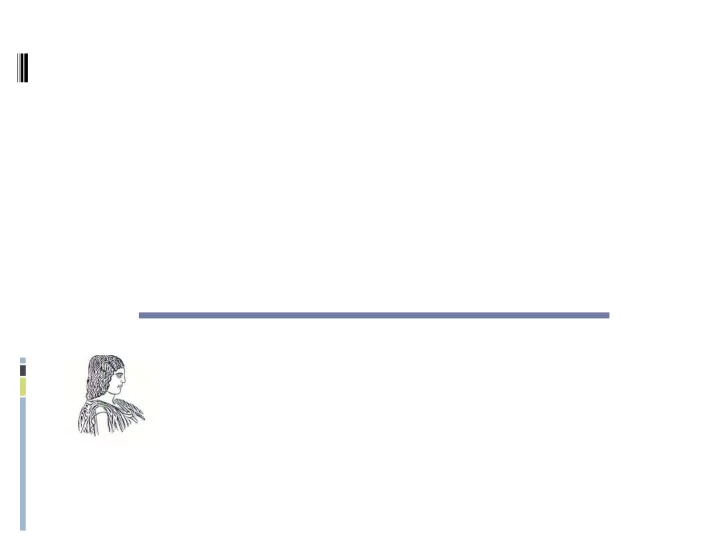

The effect of different Click to edit Master subtitle style stabilizers aAgricultural University of Athens, Dept. Food Science & Technology, Athens, Greece bAgroParisTech, Unit for Food Process Engineering, on the Paris,France
Ultrasonic emulsification Advantages (+) Vs First reported by Basics More stable Conventional emulsions ( Smaller Wood & Loomis methods droplet sizes within a (1927) narrow size distribution) 16–100 Requires little or no kHzCavitation surfactant phenomenon Less processing Minimum droplet time size 0.1–0.2 μm Power saving scale-up for in-line processing (Lab to Plant)
Objective -Reduce oil droplet & production of fine model emulsions -Use of different commercial (<1μm) stabilizers -Influence of ultrasound parameters (time, intensity) on stability
Materials & formulation O/W emulsions (pH~7)
Emulsion preparation Primary or coarse o/w emulsion (Ultra-Turrax 6.500 RPM/4+4min) Method A 70% Intensity/2min Ultrasonication (20kHz, 200W) Method B 70%Intensity/3min+90%Intensity/1min Coarse Final WPC + Oil + Gums emulsion emulsion Ultrasonication 6.500 RPM 6.500 RPM 4min 4min
Experimental Microscopic observation polysaccharide texture Viscosity rheology behaviour Diffusion NMR Spectrometryoil droplet sizing Turbidity (Multiple Light Scattering) syneresis or coallesence Differential Scanning Calorimetry (DSC, cool-heat cycles -40 to 40 oC) effect on crystallization of water
Microstructure of emulsions § 0.1& 0.25%weak structure, induce depletion flocculation XG 0.1 GG 0.1 LBG 0.1 Method A XG 0.25 GG 0.25 LBG 0.25 § 0.5%better filling properties, stronger network, fewer gaps, methods A&B similar XG 0.5 GG 0.5 LBG 0.5 structure Method B XG 0.5 GG 0.5 LBG 0.5
Oil droplet size Gum (% w/w ) Method A Method B Gum concentration affects droplet size (method A) D50 (μm) D50 (μm) Sub-micrometer emulsions method B 1.107a Xanthan 0.25 LBGmost effective in reducing droplet size 0.832a 1.325b 0.5 0.786a 1.093a Guar 0.25 0.843a 1.330b 0.5 0.771a 1.018c Locust 0.25 0.876a bean 1.077a 0.615b 0.5 XG 0.5% (A)
Emulsion viscosity Emulsion rheology=ƒ(gum) shear thinning Viscosity: XG>LBG>GG Increase of sonication time and intensity (method B) reduces viscosity Stability
Stability during cold storage- Clarification Clarification Serum Index (SI) Serum height SI (%)= Sample height XG , GG & LBG 0.1%,destabilized 0.1% (A) within a few hours Stability of 0.1% emulsions during storage at 5oC
Stability during cold storage- Clarification Xanthan, more stable emulsions A B SI XG<LBG<GG Increase of time and XG 0.25% intensity decreased stability (XG) Stability of 0.25% emulsions during storage at 5oC
Stability during cold storage- Coalescence Back Scattering, (BS) ~ƒ(droplet size) -1 (Mie time (days) Theory) Back Scattering 0d Back Scattering 0d XG, stable during 10-day storage BS0=79.5% BS0=79.9% 1d 100% 100% 1d 2d 2d 2d 80% 80% 3d 3d 4d 60% 60% 5d 3d BS10=78.8% BS10=78.9% 5d 4d 5d 40% 40% 6d 6d 7d 20% 20% 7d 7d 8d 8d 0% 0% 9d 10d 10d 0mm 50mm 0mm 50mm XG 0.5% (method A) XG 0.5% (method B)
Stability during cold storage- Coalescence Back Scattering, (BS) ~ƒ(droplet size) -1 (Mie Theory) Back Scattering 0d Back Scattering 0d GG & LBG, increased coalescence, less stable 100% BS0=83.1% 100% BS0=83.5% 0d 0d 1d 2d 80% 80% 2d 2d 3d 4d 60% 60% 4d 4d BS10=74.5% BS10=75.6% 5d 40% 40% 6d 6d 6d 7d 20% 20% 8d 7d 0% 9d 0% 8d 9d 9d 0mm 50mm 0mm 50mm GG 0.5% (method A) LBG 0.5% (method A)
DSC cool-heat cycles (-40 to 40oC) -Samples (B) crystallized in higher temperatures - ΔH values remain stable during heat-cool cycles T max (o C) ΔΗ (J/g) Cycle 1 Cycle 2 Cycle 3 Cycle 1 Cycle 2 Cycle 3 Method A -16.93 (0.16) -17.10 (1.93) -15.62 (0.57) 252.9 (35.78) 253.95 (37.41) 253.95 (36.56) XG 0.25% -15.34 (0.05) -17.00 (0.04) -16.53 (0.09) 294.40 (0.71) 291.30 (0.28) 292.10 (0.00) XG 0.5% Method B -12.63 (1.93) -14.23 (1.19) -14.25 (2.31) 240.00 (0.57) 240.65 (0.07) 240.45 (0.07) XG 0.25% -12.97 (0.95) -13.07 (0.44) -14.21 (0.58) 237.80 (1.71) 237.97 (1.62) 237.77 (2.03) XG 0.5% Water crystallization parameters of emulsions containing XG (*) *Results presented as average out of two measurements, in parenthesis standard deviation values.
Conclusions-future aspects Ultrasonication time & intensity affected droplet size, viscosity & stability of samples Xanthan , more effective than guar and locust bean gum. Elucidate effect of crystallization on emulsion stability Explore effect of sonication on gum chains Incorporate new gums (fenugreek & mastic gum)
Acknowledgements This research has been co-financed by the European Union (European Social Fund – ESF) and Greek national funds through the Operational Program "Education and Lifelong Learning" of the National Strategic Reference Framework (NSRF) - Research Funding Program: Heracleitus II. Investing in knowledge society through the European Social Fund.
Recommend
More recommend